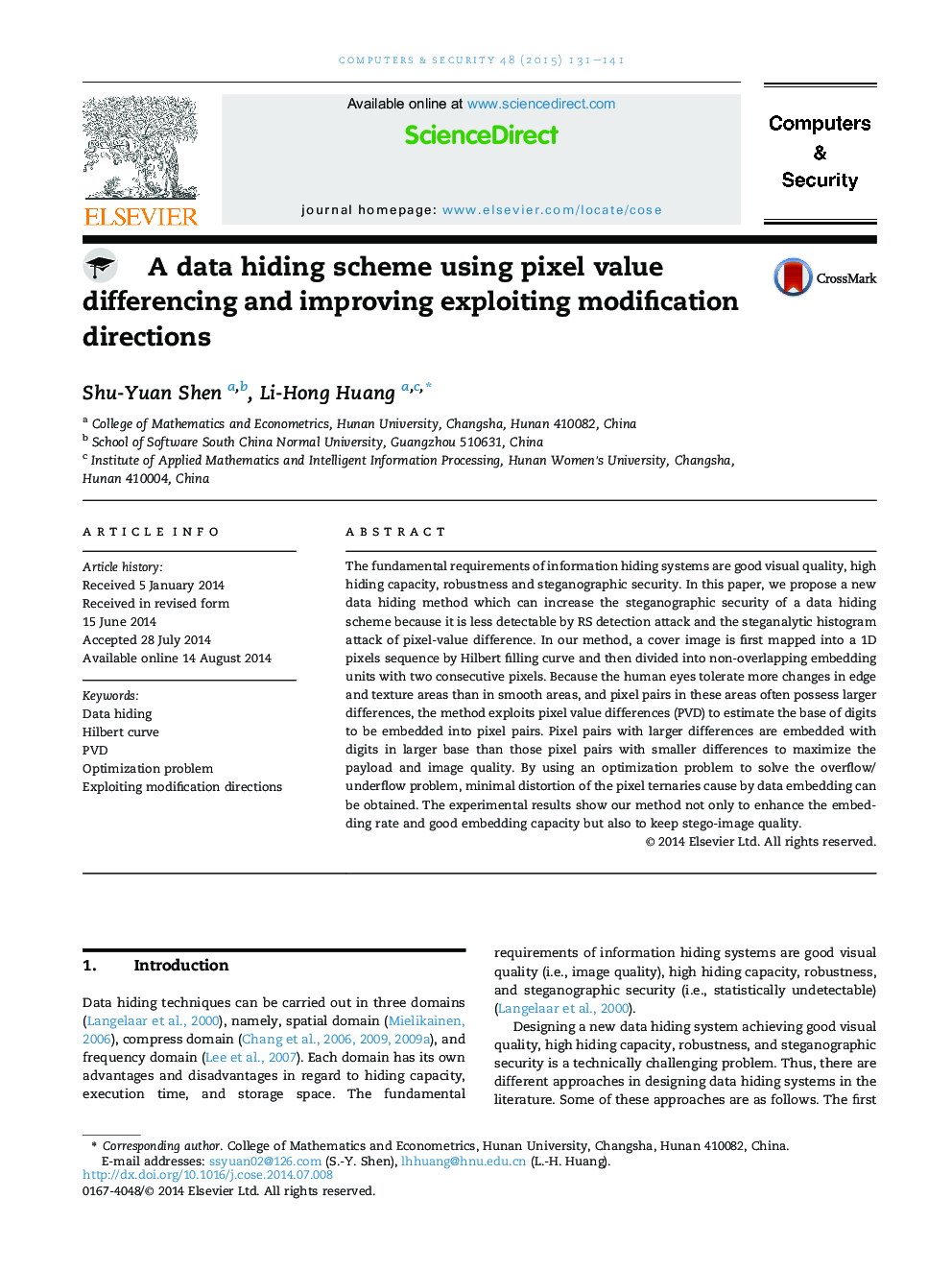| کد مقاله | کد نشریه | سال انتشار | مقاله انگلیسی | نسخه تمام متن |
|---|---|---|---|---|
| 454444 | 695194 | 2015 | 11 صفحه PDF | دانلود رایگان |
• Conceals digits in any-ary notation adaptively.
• Employ Hilbert filling curve to create 1D pixels sequence.
• Does not require any memory space store the embedding matrix.
• Resist the RS detection attack and the steganalytic histogram attack of pixel-value difference.
The fundamental requirements of information hiding systems are good visual quality, high hiding capacity, robustness and steganographic security. In this paper, we propose a new data hiding method which can increase the steganographic security of a data hiding scheme because it is less detectable by RS detection attack and the steganalytic histogram attack of pixel-value difference. In our method, a cover image is first mapped into a 1D pixels sequence by Hilbert filling curve and then divided into non-overlapping embedding units with two consecutive pixels. Because the human eyes tolerate more changes in edge and texture areas than in smooth areas, and pixel pairs in these areas often possess larger differences, the method exploits pixel value differences (PVD) to estimate the base of digits to be embedded into pixel pairs. Pixel pairs with larger differences are embedded with digits in larger base than those pixel pairs with smaller differences to maximize the payload and image quality. By using an optimization problem to solve the overflow/underflow problem, minimal distortion of the pixel ternaries cause by data embedding can be obtained. The experimental results show our method not only to enhance the embedding rate and good embedding capacity but also to keep stego-image quality.
Journal: Computers & Security - Volume 48, February 2015, Pages 131–141
